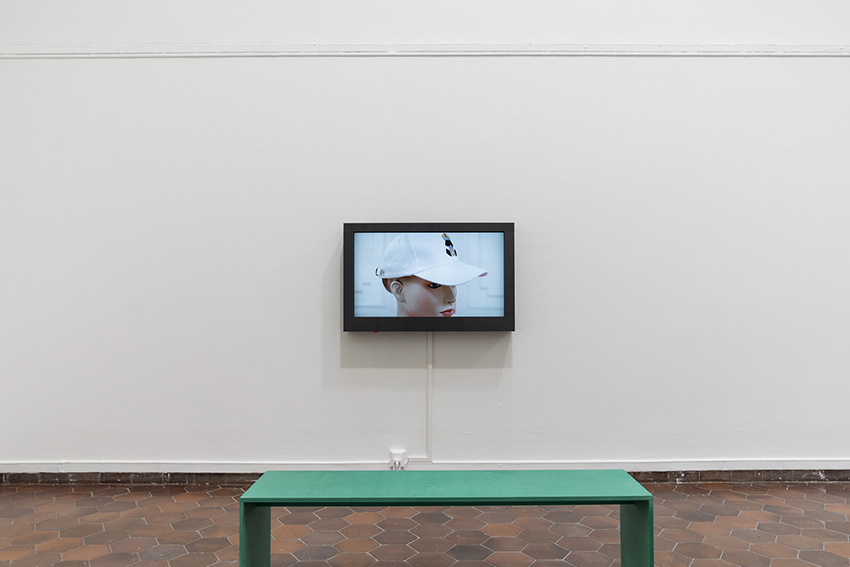The exhibition Through the Things We Make at Göteborgs Konsthall features installations by Åsa Norberg and Jennie Sundén, and works by Ruth Buchanan, Falke Pisano, Laure Prouvost, Shana Moulton, Lucy McKenzie & Richard Kern and Agnieszka Polska. All artists have previously been presented at Hit art space in 2009-2014. With artistic oeuvres that are in dialogue with art history and their predecessors, and by creating new contexts for contemporary colleagues, Through the Things We Make explores artistic practices as a part of collective movements.
Together Is Not Something You Are, It’s Something You Make
Text: Jennie Sundén och Åsa Norberg
“Dear fellow beings, together is not something you are, it’s something you make,” writes Katarina Bonnevier in a text in the form of a letter to us, about us. In her text, dated Sunday, 3 June, 2012, she wanders from our studio in Gothenburg, via Vanessa Bell’s Villa Charleston in East Sussex, to our installation Years of inking in Common at Galleri 54 in Gothenburg. The year before, Katarina Bonnevier had performed the work Never Trust the Decor (I Answer No Questions) at our art space Hit. She says, “First we build the houses, then they build us.”
The exhibition Through the Things We Make brings together six video works and four installations with different perspectives on the theme of material culture and sociomaterial values. Through the things we make. Including our actions and the objects we create, together with an “us”, as in we, you and me, and mankind in general. Through the things we surround ourselves with we obtain knowledge and information, organise our world, learning about it and its history. Through them, we build our identity and are empowered, we shape economies, consumption and fictive values.
Although the distance between hand and object is increasing, and our under- standing of the relationship between them is diminishing, material cultures can never exist without a making. Likewise, society can never be built without people and their actions. So, what is an object, a thing, an item? What distinguishes an everyday object from a work of art, from an action? What is the difference between practice and theory, between artistic and political work? Through the things we make. If materials are passive, then form is active. When we shape the materials, they begin to say something, to communicate and infuence us. How we move, what we feel, the roads we take.
It is in this examination of, and communication with, our material environment that the works in Through the Things We Make come together. In Ruth Buchanan’s Sleepwalkers a group of school children study ceramic objects in a museum by touching, patting and stroking them. From this tactile beginning, the narrator leads us on via the vibrations of a clicking tongue and the rhythm of Morse code. Communication through objects takes place in their use and exchange. As in transactions of goods and services, where objects are part of an economy. In the work The Value in Mathematics (Language), Falke Pisano challenges the perception of mathematics as a discrete, universal language, and instead highlights the variety of mathematics, which is, in fact, culturally based. Can equations be solved without accounting for the impact of context-specific social relations? It is our relationship to the object that gives it its purpose. It is we who imbue it with meaning, through our relationship to it and the way we use it. When Laure Prouvost, in the work Wantee, tries to find her fictive grandfather through what he left behind, works of art turn into utility objects. Why not use a painting as a tray? How is the value of an artwork affected when it is given a different purpose? Shana Moulton’s alter ego in Whispering Pines 9 shows us a person’s search for identity through consumption, and how the material surroundings affect her. Here, the object is transformed into a product, a commodity that not only has a practical function but is also expected to transform us fundamentally. In the crime novel pastiche The Girl Who Followed Marple, Lucy McKenzie and Richard Kern are inspired by how products have been marketed to women in innovative ways over the ages, focusing on the body. But what we encounter here is an ambiguous and productive female body that refuses to be defined by an external gaze. Ultimately, despite industry, technology, computers and robots, it is the body that makes and the hand that creates the material world we live in. A knowledge that endows us with power. When Agnieszska Polska in How the Work is Done reconstructs a strike by students at the Art Academy in Krakow in 1956, she uncovers the power inherent in doing nothing at all. Non-creating becomes an action in itself, forming completely new movements that can ultimately influence society in general. “Together is not something you are, it’s something you make”.
Image 8: Pia Mauno - Through the Things We See
Photo credits 3, 5, 10, 11: Fredrik Åkum
|











